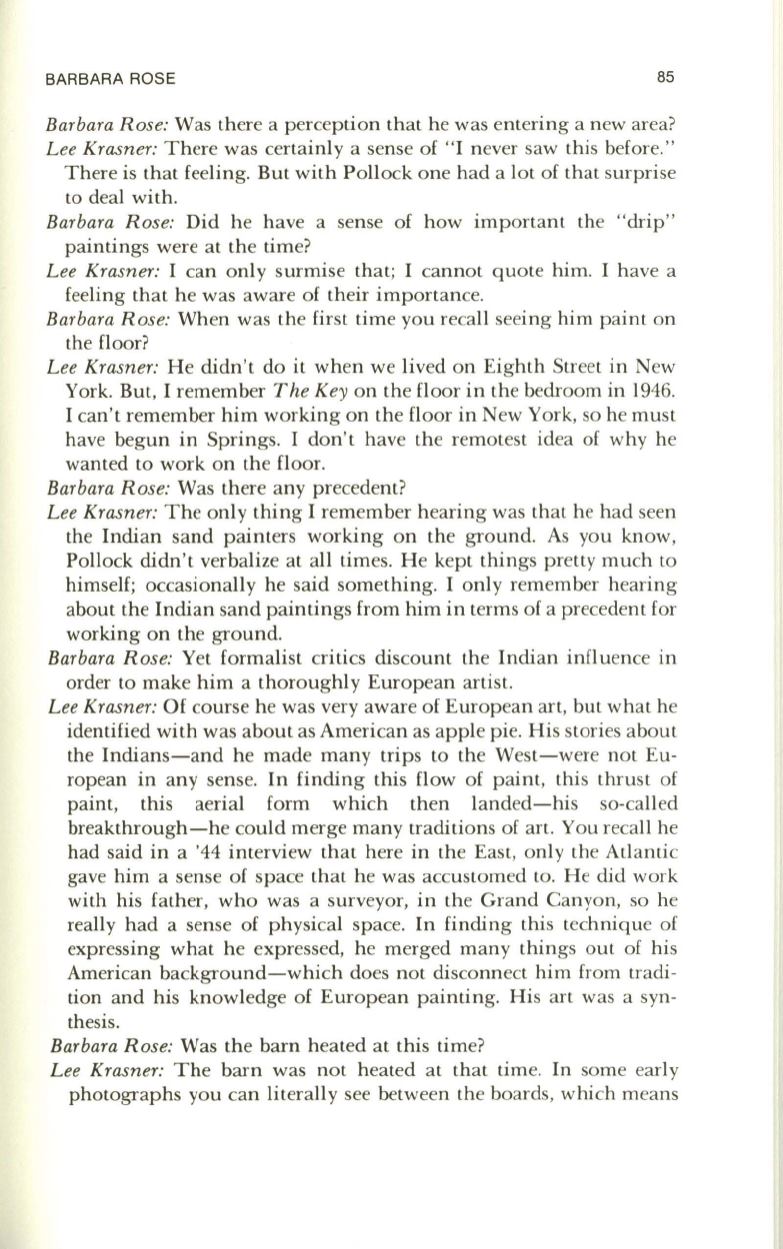
BARBARA ROSE
85
Barbara Rose:
Was there a perception that he was entering a new area?
Lee Krasner:
There was certainly a sense of "I never saw this before."
There is that feeling. But with Pollock one had a lot of that surprise
to deal with.
Barbara Rose:
Did he have a sense of how important the "drip"
paintings were at the time?
Lee Krasner:
I can only surmise that; I cannot quote him. I have a
feeling that he was aware of their importance.
Barbara Rose:
When was the first time you recall seeing him paint on
the floor?
Lee Krasner:
He didn't do it when we lived on Eighth Street in New
York. But, I remember
The Key
on the floor in the bedroom in 1946.
I can't remember him working on the floor in New York, so he must
have begun in Springs. I don't have the remotest idea of why he
wanted to work on the floor.
Barbara Rose:
Was there any precedent?
Lee Krasner:
The only thing I remember hearing was that he had seen
the Indian sand painters working on the ground. As you know,
Pollock didn't verbalize at all times. He kept things pretty much to
himself; occasionally he said something. I only remember hearing
about the Indian sand paintings from him in terms of a precedent for
working on the ground.
Barbara Rose:
Yet formalist critics discount the Indian influence in
order to make him a thoroughly European artist.
Lee Krasner:
Of course he was very aware of European art, but what he
identified with was about as American as apple pie. His stories about
the Indians-and he made many trips to the West-were not Eu–
ropean in any sense. In finding this flow of paint, this thrust of
paint, this aerial form which then landed-his so-called
breakthrough-he could merge many traditions of art. You recall he
had said in a '44 interview that here in the East, only the Atlantic
gave him a sense of space that he was accustomed to. He did work
with his father, who was a surveyor, in the Grand Canyon, so he
really had a sense of physical space. In finding this technique of
expressing what he expressed, he merged many things out of his
American background-which does not disconnect him from tradi–
tion and his knowledge of European painting. His art was a syn–
thesis.
Barbara Rose:
Was the barn heated at this time?
Lee Krasner:
The barn was not heated at that time. In some early
photographs you can literally see between the boards, which means


